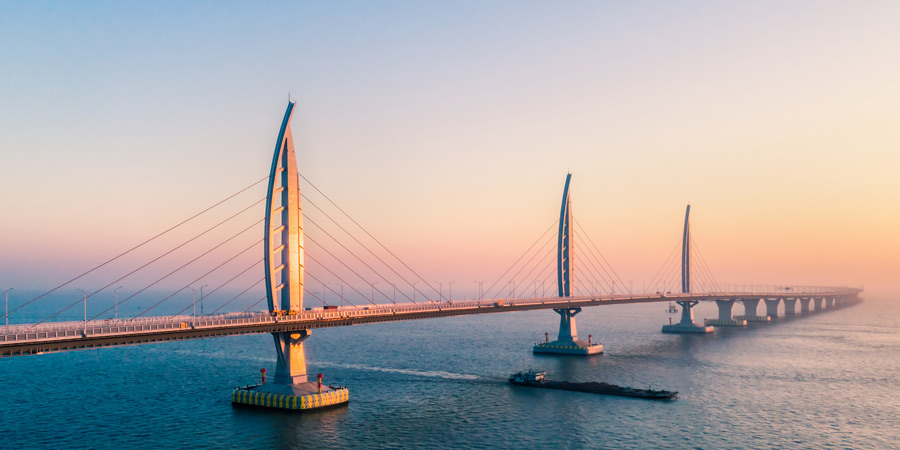Protecting long-span bridges

Long-span bridges face growing challenges with protecting steel decks. These dynamic structures face strain from growing traffic volumes and from more extreme weather. There are numerous ways that your waterproofing system can help address these issues and help get your new bridge open faster.
Protect against movement
Structures like the General Stefan Rowecki Bridge in Poland are highly dynamic, which means extra care must be given when selecting waterproofing for the bridge deck. The bridge will stiffen and then sag based on traffic volumes that exceed 150,000 cars daily. And due to the severe weather shifts in the region, the bridge deck will expand and contract amid temperature changes. The bridge deck waterproofing needs to be able to accommodate these movements.
To address these issues, general contractors B7 and ZBM Inwestor Zastepczy Sp. Z o.o. selected the ELIMINATOR bridge deck waterproofing system from Stirling Lloyd (now GCP Applied Technologies). The waterproofing membrane has excellent crack bridging capabilities, allowing it to perform well in dynamic structures. The unique chemistry of the membrane is designed to perform well across a wide temperature range. This allows contractors to apply waterproofing to the bridge deck and open trafficked areas more quickly and efficiently.
Withstand extreme weather
Long-span bridges are exposed to punishing weather, and this is only expected to get worse as climate change leads to more intense conditions. These concerns were top of mind when the Hong Kong Zhuhai-Macao Bridge Authority began investigation waterproofing solutions for the new structure, which would become the world’s longest sea-crossing bridge. The waterproofing system would need to withstand the warm marine climate during both application and for the long run.
The Authority selected the ELIMINATOR® waterproofing membrane, which was applied to approximately 500,000m of the three steel navigation bridge sections in mainland China waters. the ELIMINATOR® waterproofing membrane creates a composite action between the bridge deck, the waterproofing membrane, the substrate and the asphalt. This keeps the membrane fully bonded both downwards to the deck and upwards to the surfacing. This not only stops water from getting into the bridge deck, but keeps the paving and the deck working concert with one another.
To complete the waterproofing, a thinner layer of Tack Coat No.2 was applied. This tack coat dries quickly to a hard surface, which is resistant to the wheel loads of the asphalt paving plant. When the 230°C hot-poured asphalt is applied directly to this heat-activated tack coat, as it cools a strong chemical bond is formed, allowing the whole surface pavement system to work compositely in transmitting and dissipating the considerable stresses and strains induced by traffic loading and structural movements.
Accelerate bridge completion
Each step in the construction process can be time-consuming for long-span bridges, so contractors are always looking for ways to shave extra time off of the process while ensuring high quality. One way to do so is with the right waterproofing system, as was the case with the Verrazano-Narrows Bridge in New York City.
The general contractor, Tutor Perini, had a challenging construction schedule in one of the most densely populated cities in the world. The waterproofing product was needed that could be applied quickly and could perform in both extremely high summer temperatures and extremely cold winter temperatures. The ELIMINATOR system’s fast curing capabilities allowed the work to be carried out during restricted timeframes, ensuring a rapid return to service that minimised costly disruption.
Learn more about waterproofing long-span bridges.
標籤 (Tags)
- Bridge Deck Waterproofing
- Bridges
- ELIMINATOR
- Waterproofing
